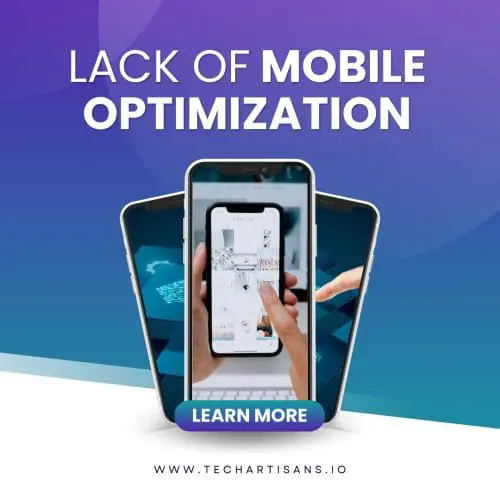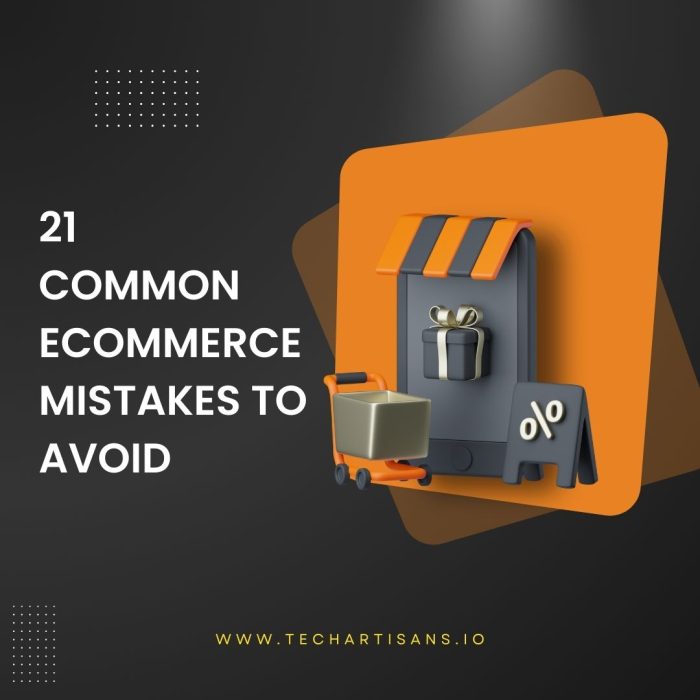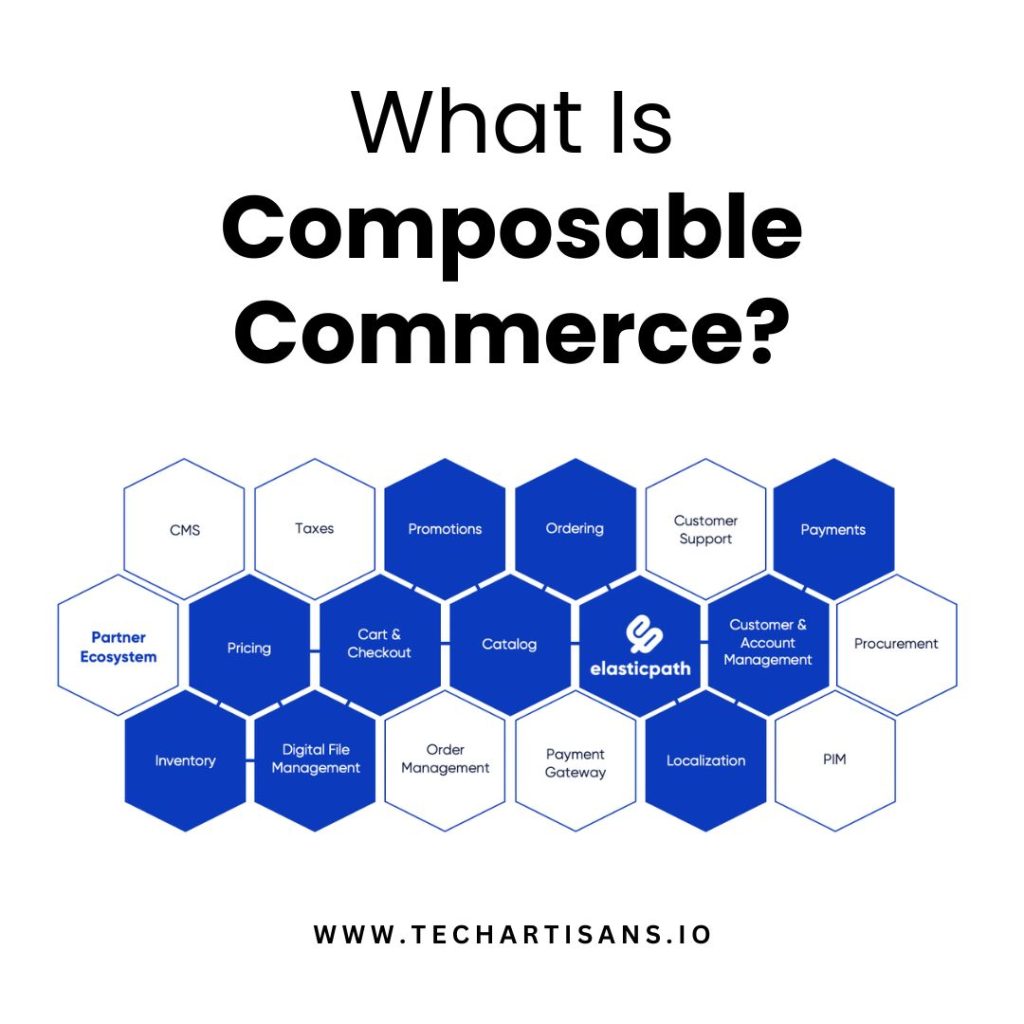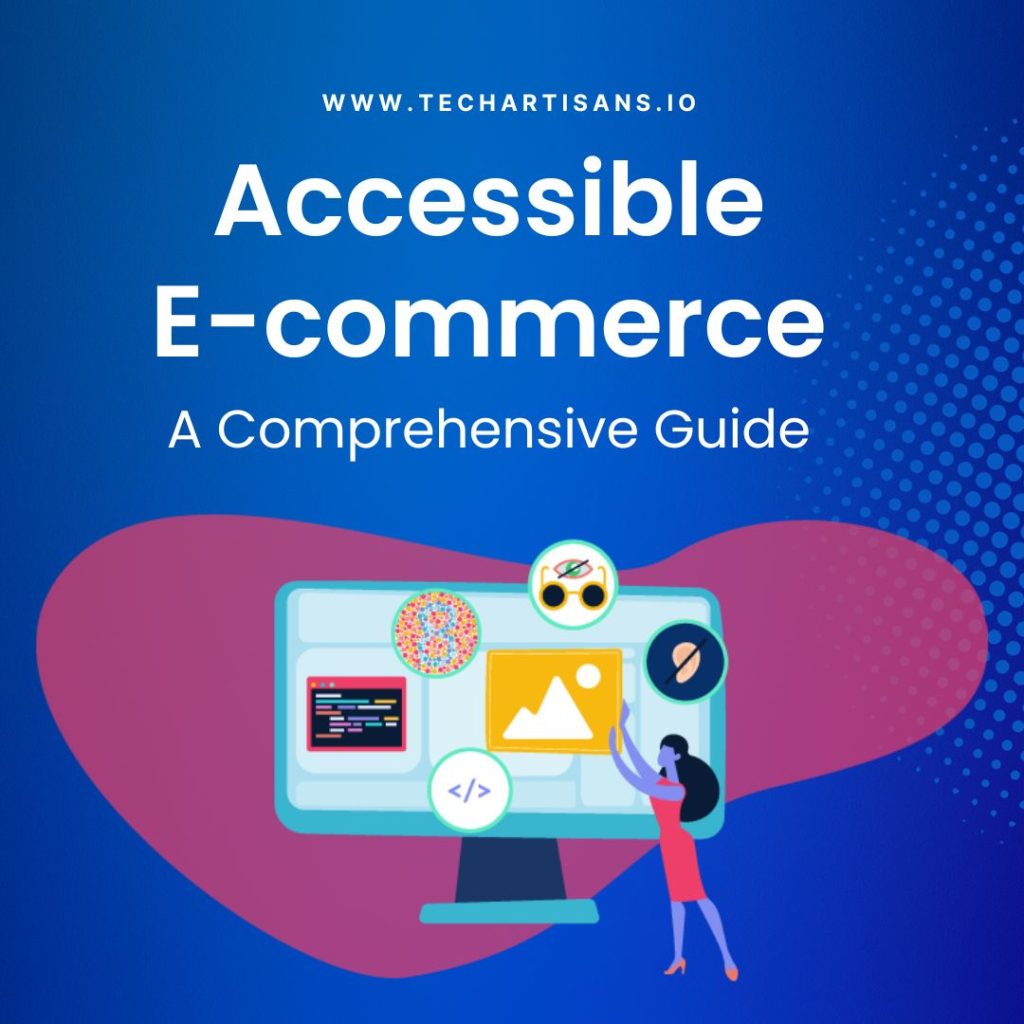An eCommerce website is an essential tool for any business that sells online. However, many eCommerce businesses make costly mistakes that can impact the success of their website. Some of the most common mistakes include poor website design, lack of mobile optimization, slow loading times, lack of product information, etc.
By avoiding these mistakes, you can improve the customer experience on your eCommerce website and grow your business. In this article, I have provided the top eCommerce mistakes to avoid and their solution to help you make more sales and generate revenue.
Top Mistakes to Avoid on eCommerce Platform

1. Poor Website Design:

It is a common eCommerce mistake that can come in the way of the success of eCommerce businesses. A poorly designed website can be visually unappealing, confusing to navigate, and difficult to use, which can drive potential customers away.
On the other hand, if your website is well-designed, it can make a great positive first impression and encourage customers to stay and buy from you.
Solution
To avoid this mistake, invest in a professional website design that is visually appealing and easy to navigate. This includes choosing an attractive color scheme, using high-quality images, and organizing content logically and intuitively. Also, make sure your online store is responsive and works well on all devices, as the number of mobile users is increasing day by day.
By investing in a professional website design, you can create a positive and engaging user experience that helps you stand out from the competition and attract and retain customers.
2. Lack of Mobile Optimization

Mobile optimization is crucial for any eCommerce platform. A website that is not optimized for mobile devices can be difficult to navigate and use on smaller screens, which can frustrate users and drive potential customers away.
Solution
To ensure this doesn’t happen with your eCommerce stores, make your website responsive and make sure it works well on all devices. The layout and design should automatically adjust to fit the size and resolution of the device on which the user opens it. Also, ensure that all features and functionality, such as forms and buttons, are easy to use on mobile devices.
By making sure your website is mobile-optimized, you can provide a positive user experience for all customers and improve your chances of converting mobile visitors into paying customers
3. Slow Loading Times

Slow loading times are one of the most common eCommerce mistakes. It can lead to a frustrating user experience and a loss of potential customers.
When a website takes too long to load, visitors may become impatient and decide to leave before the page completely loads. A high bounce rate, which is the percentage of visitors who leave a website after viewing only one page, is not good for the SEO of the website.
Solution
To improve the loading speed of web pages, optimize the images on your online store and eliminate any unnecessary plugins that may be causing slow loading times. Also consider using a content delivery network (CDN) to distribute your website’s content across multiple servers, which improves loading times for visitors located far from your primary server.
See our article on Web Performance Best Practices
4. No Privacy Policy

Lack of a clear privacy policy is one of the most common eCommerce mistakes that can impact the trust and credibility of an eCommerce website. A privacy policy is a legal document that outlines how a business collects, uses, and protects customer data. If your online store doesn’t have a clear privacy policy, customers feel hesitant to share their personal and financial information.
Solution
To ensure your eCommerce store users trust you enough to purchase from you, create a clear and concise privacy policy that outlines your data collection and usage practices. The privacy policy should be easily accessible on your eCommerce platform and written in language that is easy for customers to understand.
Also, make sure to follow all relevant laws and regulations regarding data privacy, such as the General Data Protection Regulation (GDPR) in the European Union.
By having a clear privacy policy, you can build trust and credibility with customers and encourage them to purchase from your online store. This can lead to increased customer satisfaction and loyalty.
check out the Web Accessibility Guide
5. Lack of Product Information

Poorly written or lack of product information is one of the most common eCommerce mistakes found on many online stores. It makes it difficult for customers to make informed decisions.
If your product page lacks detailed descriptions, high-quality images, and other helpful information, it can be difficult for customers to understand what they are buying and whether it meets their needs. Poor product description will lose your customers’ trust and ultimately result in lost sales.
Solution
To help your website visitors make a more informed decision, provide them with your own product descriptions that clearly communicate the features and benefits of each product. Also, include high-quality photos and videos that showcase the product from different angles and in use.
See: Best Ecommerce SEO Platforms
You can add other helpful information such as product specifications, customer reviews, and comparisons to similar products.
By providing detailed product information, you can help customers make informed purchasing decisions and build trust in your eCommerce business. This can lead to increased sales and customer satisfaction.
6. No Customer Reviews

Lack of customer reviews is one of the most common eCommerce mistakes to avoid. When customers are considering a purchase, they often look for reviews from other customers to help them make a decision. If your website lacks customer reviews, it can be more difficult for potential customers to trust your business and your products.
Solution
To have more customer reviews, encourage customers to leave reviews on your website and social media channels. You can ask your current customers by sending follow-up emails after purchase and make it easy for customers to leave a review on your website. Also, consider offering incentives, such as discounts or free products, to encourage customers to leave a review.
By including customer reviews on your website, you can build credibility and trust with potential customers and improve your chances of making a sale.
7. No Trust Signals

Having no trust signals is one of the major eCommerce mistakes to avoid. Security measures on your website also impact the trust and credibility of an eCommerce website. With the increasing threat of cyber attacks, you need to make sure that your website and customer data are secure. Without proper security measures, customers may be hesitant to share their personal information.
Solution
To build trust with your customers, implement security measures to protect your website and customer data. Security measures include SSL encryption that secures data transmissions. Also, implementing strong password policies, and regularly updating software to fix vulnerabilities reduce the threat of cyber attacks. Moreover, consider using security badges and certifications to reassure customers that their information is safe.
By implementing security measures, you can build trust and credibility with customers and encourage them to make a purchase. This can lead to increased customer satisfaction and loyalty.
Learn more about How to Protect Your Website from Web Attacks
8. No Clear Calls to Action

No CTA is a major eCommerce mistake found on most eCommerce platforms. If your website doesn’t have a clear call to action, it makes it difficult for your target customers to understand what they should do next on an eCommerce website.
A CTA can be a button or link that directs users to take a specific action. Some examples of CTAs include “Add to Cart,” “Buy Now,” “Get a Quote,” etc. Without clear CTAs, customers may become confused and uncertain about how to complete a purchase.
Solutions
Include prominent CTAs throughout the purchasing process on your product pages to guide your users. Your CTAs should be visually appealing and use action-oriented language to encourage users to take the next step. Also, it’s a good idea to test different CTA placements and designs to see which ones are most effective at driving conversions.
By including clear CTAs on your website, you can guide new customers through the purchasing process and increase the chances of making a sale.
9. No Personalized Recommendations

Personalized recommendations are a good way to help your target customers find multiple products they might be interested in on your eCommerce website. When the target audience is presented with a long list of unrelated products, they may become overwhelmed and unsure of where to start, which causes a loss of sales.
Solutions
To provide your traffic with personalized recommendations, use their data to present them with related products to their previous purchase. This can be done using algorithms that analyze a customer’s purchase history, browsing behavior, and other data points to make personalized recommendations. You can also use cross-sell techniques to suggest complementary or upgraded products to the target audience.
By providing personalized recommendations, you help customers find products that are relevant to their interests and increase their chances of making a sale.
Learn more: Ecommerce vs Retail: Should I Expand My Business Online?
10. No Search Functionality

No search functionality makes it difficult for your traffic to find products on an eCommerce store. When a website lacks a search bar, customers may become frustrated and unable to find what they are looking for, leading to a poor user experience and a lack of sales.
Solutions
Add a search bar to your website to help your target audience easily find what they are looking for. The search space should be prominently displayed and easy to use, with suggestions and autocomplete functionality to help guide users. Also, make sure that your website’s search function is able to accurately find relevant products.
By adding a search bar to your website, you can improve the user experience and make it easier for customers to find and purchase the products they are interested in.
Read more about How to Build Website Architecture
11. No Abandoned Cart Emails
If you don’t send reminders to users about abandoned carts, it can result in lost sales and revenue. When a customer adds items to their cart but does not complete the purchase, it’s important to remind them of the items they left behind and encourage them to complete the purchase. Without abandoned cart emails, more customers may forget about the items in their cart and move on to a competitor’s website.
Solutions
Set up abandoned cart emails that are triggered when a customer leaves items in their cart without completing the purchase. These emails should remind the customer of the items they left behind and include a clear call to action to encourage them to complete the purchase. You can also consider offering incentives, such as discounts or free shipping, to encourage the customer to complete the purchase.
By sending abandoned cart emails, you can recover lost sales and increase revenue from your eCommerce store.
12. No Loyalty Program

A loyalty program affects customer retention in an eCommerce store. A loyalty program is a rewards program that incentivizes customers to continue shopping with your business. Without a loyalty program, customers may be less motivated to continue shopping with you and may be more likely to switch to a competitor.
Solution
To avoid this mistake, it’s important to offer a loyalty program to reward and retain customers. This can include rewards such as points, discounts, or free products that can be earned through purchases or other actions. You should also make sure to communicate the benefits of the loyalty program to customers and make it easy for them to participate.
By offering a loyalty program, you can increase customer retention and encourage customers to continue shopping with your business. This can lead to increased sales and customer satisfaction.
13. No Social Media Presence
Social media presence is crucial for any business in this digital age. It improves your business’s visibility, reaches a wider audiance and provides social proof to your customers. Social media platforms are essential tools for connecting with customers and promoting your products. Without a social media account connected to your website, it is difficult to reach potential customers and build brand awareness.
Solution
Social media is a great way to connect with customers and promote your products. You can engage your audience by social media posts, product photos, and videos about your products and solve their queries through comments and messages. Also, you can consider running social media ads to reach a larger audience and drive traffic to your website.
By using social media to connect with customers and provide social proof, you can increase visibility, build brand awareness, and drive sales from your eCommerce store.
14. No Email Marketing

Email marketing has an important role to play in the success of an eCommerce business. It is a powerful tool for staying in touch with customers, promoting new products, and driving sales. Without an email marketing strategy, you cannot keep customers informed and engaged with your business.
Solution
Start your email marketing campaign by building an email list and send regular newsletters to keep customers informed about new products, sales, and other important updates. You should also segment your email list and tailor your messaging to different customer groups to make it more relevant and personalized.
15. No Live Chat
Live chat improves your customer’s user experience and they will keep coming back to you to buy more if they feel taken care of. Live chat is a feature that allows customers to get quick and convenient assistance from a customer service representative in real-time. If your online store doesn’t have a live chat feature, your customers will have to wait for a response through email or phone, which is frustrating and leads to a poor user experience.
Solution
To make sure it doesn’t happen at your mistake, offer live chat support on your website. You can use a chatbot or a customer service representative that attends to the users who face a problem or have queries. Live chat should be prominently displayed on your website and easy for customers to use.
By offering live chat, you can provide quick and convenient assistance to customers and improve the overall user experience on your eCommerce store.
16. No Returns Policy

A returns policy is crucial for customer satisfaction on an eCommerce site. A returns policy sets customer expectations and outlines the process for returning a product if it is not satisfactory. Without a returns policy, customers may be hesitant to make a purchase.
Solution
You must clearly communicate your returns policy on your website. Your return policy should include information about what products are eligible for return, how to initiate a return, and any restocking fees or other conditions that apply. It’s also important to be fair and flexible with your returns policy to encourage customer trust and satisfaction.
By clearly communicating your returns policy, you can set customer expectations and reduce the risk of returns. This increases customer satisfaction and loyalty.
17. No Personalization
Personalization makes your target audience feel special and taken care of when they engage with your brand. It is important for a better user experience and success of your eCommerce business.
Personalization is the practice of tailoring the shopping experience to the individual customer, such as by showing relevant product recommendations or offering a personalized homepage. Without personalization, the shopping experience may be less relevant and enjoyable for customers, leading to a lack of sales.
Solution
You can use customer data and personalization techniques to create a more personalized shopping experience for your customers. You can personalize with the use of cookies, machine learning algorithms, and other tools that track consumer behavior and preferences. You should also consider using personalized messaging and offers to engage with customers and encourage them to make a purchase.
By using personalization, you can improve the user experience on your eCommerce site and increase the chances of making a sale. This can lead to increased customer satisfaction and loyalty.
18. No A/B Testing

A/B testing is the practice of testing two or more versions of a website element, such as a landing page or call to action, to see which performs better. A/B testing allows you to determine which elements of your website are most effective and may lead to missed opportunities for improvement.
Solution
Regularly conduct A/B tests on your website to determine what works best. There are several tools that allow you to create and compare different versions of a website element and track the results. Also, consider testing a variety of elements including CTAs, headlines, product images, and layout, to see what has the biggest impact on performance.
By using A/B testing, you can optimize your website for maximum effectiveness and improve the chances of making a sale. This can lead to increased customer satisfaction and loyalty.
19. No FAQ Page
An FAQ page on your online store not only saves you time that you might spend answering every visitor’s queries individually, but it also provides greate convenience to the users. On a dedicated page for FAQ, you can provide answers to the most frequently asked questions about your store. With a prominent FAQ page, your website visitors can easily find answers to their questions without contacting you.
Solution
Create a comprehensive FAQ page to answer all the commonn questions of your customers and address potential customer concerns. Make this page prominent and easy to access from the homepage so that your website visitors can find it easily.
20. Not Enough Shipping Options

If you don’t provide international shipping, it limits your reach and success of your online business
If your website only ships to a limited number of countries, you may be missing out on a large potential customer base. Without international shipping, customers in other countries may be unable to make a purchase with you.
Also, when customers make a purchase, they want to receive their products as soon as possible. If your website lacks fast shipping options, customers may become frustrated and stop buying from you.
Solution
Including different shipping options adds to the convenience of your customers. It allows them to pick whichever option they find more suitable for them. You can include options like same-day or next-day delivery, or guaranteed delivery within a specific time frame. You should also consider offering free or discounted shipping to encourage customers to make a purchase.
21. No Upsell or Cross-Sell Opportunities:
If you don’t provide upsell and cross-sell opportunities on your online stores, you are losing revenue and online sales. Upselling is the practice of encouraging customers to purchase a more expensive version of a product they are interested in. On the other hand, cross-selling is the practice of suggesting complementary or related products to customers. Without upsell and cross-sell opportunities, customers may not be aware of all the products and options available to them, leading to missed sales opportunities.
Solution
You can include upsell or cross-sell opportunities through personalized product recommendations, special offers and promotions, and by highlighting the benefits and value of upgraded or related products. Also, consider using targeted messaging and calls to action to encourage customers to consider these options.
Conclusion
It’s important to avoid costly mistakes in your eCommerce store in order to provide a positive customer experience and drive sales. Some key mistakes to avoid include poor website design, lack of mobile optimization, slow loading times, and a lack of product information. Additionally, be sure to include trust signals, calls to action, personalized recommendations, and a variety of payment options. By providing a user-friendly and trustworthy website, you can attract and retain customers, ultimately leading to increased sales and revenue.







